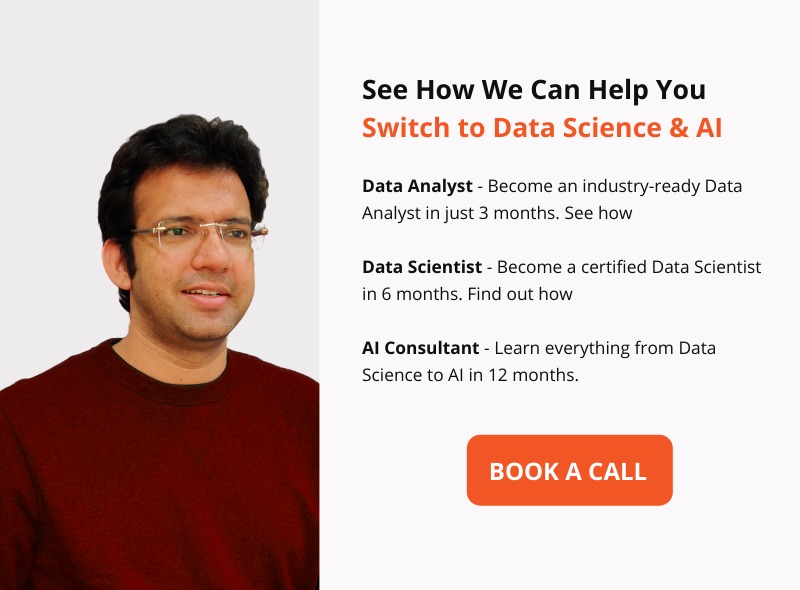In today’s data-driven era, the quest for professionals who can wield the mighty power of data to unveil actionable insights has reached a fever pitch. Step onto the stage, the Data Strategist – the central orchestrator in the captivating realm of data management and analytics.
In this guide, we embark on an exhilarating journey into the pivotal role, dynamic responsibilities, indispensable skills, and the skyrocketing significance of Data Strategists within the ever-evolving tapestry of the modern business landscape.
Who is a data Strategist?
A Data Strategist is a professional responsible for developing and implementing a comprehensive data strategy within an organization. They serve as the bridge between an organization’s data and its overarching business goals, ensuring that data is utilized effectively to drive growth, make informed decisions, and achieve strategic objectives.
What They Do: The Core Responsibilities
1. Data Governance
Data Governance refers to the framework, policies, and practices that ensure data is managed effectively, securely, and in compliance with industry regulations. Data Strategists play a crucial role in establishing and enforcing data governance policies within an organization.
This involves:
- Quality Assurance: Ensuring data quality by implementing procedures for data cleansing, validation, and verification to minimize errors and inaccuracies.
- Data Security: Implementing security measures to protect sensitive data from breaches, unauthorized access, and cyber threats.
- Regulatory Compliance: Ensuring that the organization complies with data-related regulations, such as GDPR or HIPAA, by defining policies and practices that adhere to these requirements.
2. Data Architecture
Data Architecture involves designing the structure and systems needed for the effective storage, organization, and management of data within an organization. Data Strategists are responsible for crafting a data architecture that supports the organization’s data needs.
This includes:
- Database Design: Selecting the appropriate database systems and designing the schema to store data efficiently.
- Data Storage Strategy: Determining how and where data will be stored, whether it’s in traditional relational databases, data warehouses, or newer technologies like NoSQL databases.
- Data Flow Mapping: Defining how data moves within the organization, ensuring it reaches the right people and systems.
3. Data Analysis
Data Analysis is the process of examining data to identify trends, patterns, and insights. Data Strategists collaborate with data analysts and data scientists to extract valuable insights from the data.
This involves:
- Data Interpretation: Understanding the data and its significance within the context of the organization’s goals.
- Hypothesis Testing: Formulating and testing hypotheses to draw conclusions and make predictions.
- Predictive Modeling: Utilizing statistical and machine learning techniques to forecast future trends or outcomes.
4. Data Integration
Data Integration is the process of combining data from different sources into a unified view. Data Strategists manage this integration to ensure that data is consistent and coherent across the organization.
This includes:
- ETL (Extract, Transform, Load): Extracting data from various sources, transforming it to fit the organization’s data model, and loading it into the target systems.
- Data Merging: Combining data from diverse sources, such as databases, spreadsheets, and external APIs, to create a unified dataset.
- Data Mapping: Developing a strategy for aligning data from different sources and maintaining consistency.
5. Data Strategy Development
Data Strategy Development is about crafting a comprehensive plan that aligns data initiatives with the organization’s vision, goals, and objectives. Data Strategists play a pivotal role in defining and implementing this strategy.
This involves:
- Goal Alignment: Ensuring that data initiatives directly support the organization’s overarching objectives.
- Roadmap Creation: Developing a roadmap outlining how data will be collected, stored, analyzed, and utilized over time.
- Resource Planning: Allocating resources, including budget, technology, and personnel, to execute the data strategy effectively.
6. Data Visualization
Data Visualization entails presenting data in a visual and easily understandable format, making complex data accessible to non-technical stakeholders. Data Strategists often oversee data presentation and may use data visualization tools and techniques to achieve this.
It involves:
- Dashboard Creation: Developing dashboards that provide real-time, user-friendly insights into key data metrics.
- Chart and Graph Design: Using charts, graphs, and other visualization tools to represent data trends, patterns, and comparisons.
- Storytelling through Data: Crafting narratives around data, allowing stakeholders to grasp the implications of the insights.
The Significance of Data Strategists
1. Enabling Informed Decision-Making
Data Strategists are pivotal in supporting informed decision-making within organizations. They convert raw data into actionable insights, helping executives and managers make evidence-based choices.
2. Driving Innovation
Innovation thrives on data. Data Strategists identify opportunities and insights that lead to product improvements, new services, and process optimizations, thus driving innovation.
3. Enhancing Efficiency
Efficiency is a byproduct of data-driven decision-making. Data Strategists streamline operations, reduce waste, optimize processes, and ultimately contribute to cost savings and improved profitability.
Becoming a Data Strategist
To embark on a career as a Data Strategist, you need a diverse skill set, including:
1. Data Analysis
Data analysis is at the heart of a Data Strategist’s role. It involves the ability to collect, clean, and process data to extract meaningful insights. Proficiency in statistical analysis, data modeling, and data mining is essential. A Data Strategist should be able to recognize trends, anomalies, and patterns in data, translating raw information into actionable recommendations. This skill enables them to provide valuable insights that drive informed decision-making within an organization.
2. Data Management
Data management is about handling data throughout its lifecycle, from collection and storage to utilization and disposal. A Data Strategist must have a deep understanding of how data is stored, organized, and maintained within an organization. This includes knowledge of data architecture, databases, data warehousing, and data security. They play a crucial role in defining data governance policies, ensuring data quality, and complying with data privacy regulations.
3. Business Acumen
Data Strategists are not just data experts; they are also strategic thinkers with a strong business sense. They should be able to align data strategies with the overall business goals and objectives of the organization. This means understanding the industry, market dynamics, and the specific challenges and opportunities the organization faces. They use data to provide insights that directly contribute to achieving these goals.
4. Communication and Collaboration
Data Strategists don’t work in isolation. They collaborate with various departments, including IT, marketing, finance, and operations. Effective communication is crucial for translating complex data insights into a language that non-technical stakeholders can understand. They must be able to convey the value of data-driven decisions and strategies to senior management and other teams, fostering a culture of data-driven decision-making within the organization.
5. Data Visualization
Data visualization is the art of presenting data in a visual and comprehensible format. Data Strategists should be familiar with data visualization tools such as Tableau, Power BI, or programming languages like Python and R for creating meaningful graphs, charts, and dashboards. These visual representations help in conveying complex data insights in a more accessible and engaging way, making it easier for stakeholders to grasp and act upon the information.
6. Technology Proficiency
Data management and analysis often involve specific software and technology tools. Data Strategists need to be well-versed in these tools, whether it’s database management systems, data analytics platforms, or data visualization software. Staying updated with emerging technologies and tools in the data field is essential to remain effective and relevant in the role.
In today’s data-driven era, Data Strategists are indispensable. They are the architects of data-driven decision-making, innovation, and efficiency.
Whether you aspire to be a Data Strategist or collaborate with one, understanding their role, responsibilities, and skill set is pivotal. Embracing the power of data is the key to unlocking opportunities and achieving success in our increasingly data-centric world.
Data Strategists are the navigators in this vast sea of information, guiding businesses toward brighter horizons.
Ready to take the next step in mastering the world of data?
Discover your path to becoming a Data Strategist with Accredian’s Data Science & AI course.
 Pin
PinDive deeper into the captivating world of data management and analytics. Don’t miss this opportunity to unlock your data-driven potential.






